At present, the LED intelligent lighting industry is in a state of full bloom, such as infrared transmission, WiFi, Bluetooth, ZigBee, etc. The establishment of standards requires a process, and there is no consensus yet. However, the ZigBee network protocol has the highest voice in the industry and is expected to become the mainstream in the future.
1. What technology does ZigBee originate from?
A: During the use of Bluetooth technology, Bluetooth technology has been found to have many drawbacks despite its many advantages. For industrial, home automation control and industrial telemetry and remote control, Bluetooth technology is too complicated, power consumption, distance is too close, network size is too small, etc. Industrial automation, the demand for wireless data communication is getting stronger and stronger. Moreover, for industrial sites, such wireless data transmission must be highly reliable and resistant to various electromagnetic interferences at industrial sites. Therefore, after long-term efforts, the ZigBee protocol was officially released in 2003. In addition, ZigBee uses Home RF Lite, a communication protocol for home networks that it has studied before.
2. What is ZigBee?
A: First of all, ZigBee is synonymous with the IEEE802.15.4 protocol. The technology specified in this protocol is a two-way wireless communication technology with close proximity, low complexity, low power consumption, low data rate and low cost. It is mainly suitable for automatic control and remote control, and can be embedded in various devices. Support for geolocation. Because bees rely on flying and "zig" to shake the wings of the "dance" to communicate with the companions about the orientation and distance of the pollen, that is, the bees rely on such a way to constitute communication in the group. The network", so the inventors of ZigBee visually use this behavior of bees to visually describe this wireless information transmission technology.
3. What are the characteristics of Zigbee technology?
A: The characteristics of ZigBee mainly include the following eight aspects:
(1) Low power consumption: In the low power standby mode, 2 No. 5 dry batteries can support 1 node for 6-24 months or even longer. This is the outstanding advantage of ZigBee. In contrast, Bluetooth can work for several weeks, and WiFi can work for hours;
(2) Low cost: Reduce costs by greatly simplifying the protocol (less than 1/10 of Bluetooth), and reduce the requirements for communication controllers. According to the prediction analysis, the 8051 8-bit microcontroller is used to calculate the full-featured master node. Requires 32KB of code, sub-function nodes as little as 4KB of code, and ZigBee's protocol patents are free;
(3) Low rate: ZigBee works at a communication rate of 250 kbps, meeting the application requirements of transmitting data at a low rate;
(4) Close range: The transmission range is generally between 10 and 100 m. After increasing the RF transmission power, it can also be increased to 1-3 km, which refers to the distance between adjacent nodes. If the relay is used by routing and communication between nodes, the transmission distance will be farther;
(5) Short delay: ZigBee's response speed is faster, generally only 15ms from sleep to working state, and only 30ms for node connection to enter the network, further saving energy. In comparison, Bluetooth requires 3-10s and WiFi requires 3s;
(6) High capacity: ZigBee can adopt star, patch and mesh network structure. One master node manages several child nodes, and at most one master node can manage 254 child nodes. At the same time, the master node can also be managed by the upper layer network node. , can form a large network of up to 65,000 nodes;
(7) High security: ZigBee provides a three-level security mode, including no security settings, the use of access control lists (ACLs) to prevent illegal access to data, and symmetric passwords using the Advanced Encryption Standard (AES128) for flexible determination of security attributes. ;
(8) License-free frequency band: Direct sequence spread spectrum is used in the 2.4 GHz (global) frequency band of Industrial Science Medical.
4. Why is ZigBee compliant with the growing demand for reliable wireless data transmission from industrial automation?
A: ZigBee technology itself is because the Bluetooth technology cannot meet the demand for low data volume, low cost, low power consumption and high reliability wireless data communication in industrial automation. Because, for industrial sites, this wireless data transmission must be highly reliable and resistant to various electromagnetic interferences in the industrial field. In ZigBee technology, the mesh topology, automatic routing, dynamic networking, and direct sequence spread spectrum are used to meet the needs of industrial automation control sites.
5. What kind of protocol does ZigBee use?
A: ZigBee uses the IEEE802.15.4 protocol, which is a protocol with a low transfer rate of unlimited PAN. In terms of standardization, the IEEE802.15.4 working group is mainly responsible for the development of the physical layer and MAC layer protocols. The remaining protocols mainly refer to and adopt existing standards. The work of high-level applications, testing and marketing will be handled by the ZigBee Alliance.
At present, there are roughly four wireless personal area networks WPANs developed by IEEE:
1) IEEE 802.15.1 Bluetooth, Bluetooth v1.1;
2) IEEE 802.15.2 Bluetooth, the Bluetooth supplement specification, to reduce mutual interference problems when used in the same category as WiFi;
3) IEEE 802.15.3 WiMEDIA, standard speed, high speed WPAN; IEEE 802.15.3a UWB, high speed WPAN;
4) IEEE 802.15.4 ZigBee, low speed WPAN (also known as WSAN, S stands for Sensor).
6. Why is ZigBee wireless communication using the 2.4G band as a free band?
A: In China and most other countries in the world, the general use of radio equipment is subject to frequency usage fees, including mobile communication, but the mobile operator has already paid the fee to the state and adopted the number occupancy fee. The user is charged this fee. When using other wireless devices, you must first apply for a frequency license from the relevant national authorities, and then charge the amount and amount of power according to the frequency, amount and amount of wireless devices used by your wireless device. This is not a small fee. Generally, equipment costs a few thousand dollars a year.
The free frequency band refers to a frequency band that each country divides according to its actual situation and considers the consistency with other countries in the world as much as possible. It is used exclusively for industrial, medical and scientific research (ISM band). A frequency band that can be used free of charge if required. Our country's 2.4G band is such a frequency band. However, in order to ensure that everyone can use it reasonably, the state has limited the use of wireless transceiver equipment in this frequency band in different environments. For example, in urban environments, the transmission power cannot exceed 100mW.
7. Is ZigBee only suitable for short-range communication?
A: ZigBee local area network can not only expand the network by increasing the transmit power and receiving sensitivity of each node module and increasing the number of nodes, but also can monitor the distant ZigBee control network through the traditional Internet.
However, the caveats to be considered for expansion are:
1) As the transmission power increases, the power consumption naturally increases, and only requires a large amount of power consumption, which will lose the advantage of ZigBee's own low power consumption;
2) Although 2.4Ghz is a free frequency band, it cannot exceed the maximum power limit in the radio wave method.
8. What are the benefits of ZigBee's communication method using direct sequence spread spectrum?
A: The same frequency band, using different communication methods, the results may be very different, such as ASK, FSK, FHSS, DSSS and other anti-interference ability, communication security confidentiality, reliability are different. Like the CDMA system, the ZigBee system uses Direct Sequence Spread Spectrum (DSSS), which is a communication method with strong anti-interference ability, high confidentiality and high reliability. If you have used communication products for these two technologies, you will find that the two are exceptionally reliable.
Since the spread spectrum technology can achieve a low signal-to-noise ratio during normal communication, that is, it can still work normally in a highly interference environment. According to calculations and experiments, this is equivalent to a 7dBm improvement in receiving sensitivity and is not easy to interfere with others. In other words, it can transmit longer distances with lower power.
9. What are the characteristics of ZigBee compared with existing digital radio stations?
A: The advantages are as follows:
(1) High reliability: Since the integration degree of ZigBee module is much higher than that of general digital radio, the number of separate components is small, so the reliability is higher;
(2) Easy to use and safe: Because of the high integration, the ZigBee receiving module can be made smaller than the general digital radio, and the power consumption is low. The maximum emission current is much smaller than that of a CDMA mobile phone. Easy to integrate or directly placed in the device, not only easy to use, but also not easily damaged when carried outdoors.
(3) Strong anti-interference ability, good confidentiality and low bit error rate: ZigBee transceiver module uses 2.4G direct sequence spread spectrum technology, which is better than general FSK, ASK and frequency hopping digital radio. Anti-interference ability, and longer transmission distance;
(4) Free frequency band: ZigBee uses the free frequency band, and many frequency bands used by digital radio stations not only need to apply, but also need to pay a considerable frequency usage fee to the national committee every year;
(5) Low price: The price of the ZigBee digital transmission module is only a fraction of that of a digital transmission station with similar functions.
10. What kind of wireless data transmission network does ZigBee have?
A: Simply put, ZigBee is a highly reliable wireless data transmission network, similar to CDMA and GSM networks. The ZigBee data transmission module is similar to a mobile network base station. The communication distance is from standard 75 meters to several hundred meters, several kilometers, and supports wireless expansion.
ZigBee is a wireless data transmission network platform consisting of up to 65,000 wireless data transmission modules. It is very similar to the existing mobile communication CDMA network or GSM network. Each ZigBee network data transmission module is similar to a mobile network base station. Within the entire network, they can communicate with each other; the distance between each network node can range from the standard 75 meters to hundreds of meters or even kilometers.
Different from the CDMA network or GSM network of mobile communication, the ZigBee network is mainly established for industrial field automation control data transmission. Therefore, it must be simple, easy to use, reliable in operation and low in price. The mobile communication network is mainly established for voice communication. The value of each base station is generally more than one million yuan, and each ZigBee "base station" is less than 1,000 yuan. Each ZigBee network node can not only be used as a monitoring object, for example, the sensors connected to it directly collect data and monitor data, and can also automatically transfer data transmitted by other network nodes.
In addition, each ZigBee network node (FFD) can also be wirelessly connected to multiple isolated child nodes (RFDs) that do not undertake network information relay tasks within the scope of their own signal coverage. Each ZigBee network node (FFD and RFD) can support up to 31 sensors and controlled devices, and each sensor and controlled device can have 8 different interfaces. Digital and analog quantities can be acquired and transmitted.
11. What is the self-organizing network used by ZigBee?
A: A simple example can illustrate this problem. When a team of paratroopers airborne, each person holds a ZigBee network module terminal, and when they land on the ground, as long as they are within the communication range of the network module, they automatically pass each other. Looking for, it will soon be possible to form an interconnected ZigBee network, and the contact between them will change due to the movement of people. Therefore, the module can also refresh the original network by re-finding the communication objects, determining the contact with each other. This is the self-organizing network.
12. Why should ZigBee technology use a self-organizing network to communicate?
A: Mesh network communication is actually multi-channel communication. In actual industrial sites, for various reasons, it is often impossible to ensure that every wireless channel can always be unblocked, just like a city street, possibly because of a car accident, road maintenance, etc. The reason is that the traffic on a certain road is temporarily interrupted. At this time, because we have multiple channels, the vehicle (equivalent to our control data) can still reach the destination through other roads. This is very important for industrial site control.
13. Why do self-organizing networks use dynamic routing?
A: The so-called dynamic routing means that the path of data transmission in the network is not preset, but before the data is transmitted, all the paths available at the time of the network are searched, their positional relationship and distance are analyzed, and then the selected ones are selected. One path for data transfer.
In our network management software, the path is selected using the "gradient method", that is, the channel closest to the path is selected for transmission. If it is not transmitted, another path is transmitted a little further, and so on. Until the data is delivered to the destination.
At the actual industrial site, the predetermined transmission path may change at any time, or the path may be interrupted for various reasons, or it may be too busy to transmit in time. Dynamic routing combined with the mesh topology can solve this problem well, thus ensuring reliable data transmission.
14. What are the characteristics of ZigBee and existing communication mobile networks (GPRS, CDMA-1X)?
A: Its characteristics are:
(1) No network usage fee: The use of mobile network requires long-term payment of network usage fee, and is calculated according to the number of node terminals, and ZigBee does not have this fee;
(2) Low equipment investment: mobile terminal equipment needs to be purchased when using mobile network. The price of each terminal is about 1000 yuan. With ZigBee network, not only the ZigBee network node module (equivalent to base station) costs less than 1,000 yuan per renminbi. And, the main use of network sub-nodes (equivalent to mobile phones) is much lower;
(3) Communication is more reliable: Since the existing mobile network is mainly designed for mobile phone communication, although CDMA-1X and GPRS can perform data communication, it is found that not only the communication rate is much lower than the design rate, but also the data communication is reliable. Letters and continuity are not guaranteed in many cases. The ZigBee network is designed to control the transmission of data, so the control data transmission is quite guaranteed;
(4) High flexibility and low cost: Firstly, a ZigBee local automation control network is established by using ZigBee network nodes with different coverage distances, different functions, and low-cost wireless transceiver modules of other non-ZigBee systems. The Internet or mobile network is connected to a remote computer to achieve a low-cost, high-efficiency industrial automation telemetry remote control;
(5) Compared to the existing mobile communication network, although ZigBee is only a local area network, it can expand its coverage "infinitely" by providing sufficient data exports, and can be used with existing mobile networks, the Internet and Other communication networks are connected. And through these networks, many ZigBee LANs are connected to each other as a whole. Effectively solve the blind spot coverage problem of mobile networks: We know that existing mobile networks have blind spots in many places, especially in the wild, such as railways, highways, oil fields, mines, etc. The cost of adding a mobile base station or repeater is considerable. At this point, using ZigBee network for blind zone coverage is not only cost effective, but is often the only viable means.
15. How does ZigBee realize long-distance telemetry remote control?
A: The ZigBee network can also be connected to the Internet, GPRS network, CDMA1x network and other communication system lines through interface cards and other methods to achieve remote control. You can also connect two or more local ZigBee networks together over other networks.
16. What application areas does ZigBee technology have?
A: The goal of ZigBee technology is to target industrial, home automation, telemetry and remote control, such as lighting automation control, wireless data acquisition and monitoring of sensors, power and logistics management applications.
17. What industrial sites do ZigBee require for wireless data transmission?
A: requires low power consumption, low data volume (250KPS), low cost, free ISM band (2.4G), high anti-interference performance, direct sequence spread spectrum communication (DSSS), high confidentiality (64-bit factory Numbering and support for AES-128 encryption), high integration and high reliability; automatic dynamic networking between node modules, using a topology including mesh network, using collision avoidance mechanism, information in The entire ZigBee network is transmitted by means of automatic routing, thereby ensuring the reliability of information transmission.
18. In what ways can ZigBee expand its application?
A: ZigBee has a wide range of applications for industrial automation, home automation, telemetry and remote control, automotive automation, agricultural automation and medical care, oilfield, power, mining and logistics management applications.
Practical examples are as follows: lighting control, environmental control, automatic meter reading system, various curtain control, smoke sensor, medical monitoring system, large air conditioning system, built-in home control set-top box and universal remote control, heating control, home security, industrial and Building automation. In addition, it can also locate moving targets in a local area, such as vehicles in a city.
19. What are the conditions for short-range communication that can be considered for ZigBee technology?
A: Generally, ZigBee can be considered for short-range communication that meets one of the following conditions:
(1) There are many outlets that need data collection or monitoring;
(2) The amount of data required to be transmitted is not large, but the equipment cost is required to be low;
(3) Requires high reliability and high security of data transmission;
(4) The equipment is required to be small in size, and it is inconvenient to place a large rechargeable battery or power module;
(5) can be powered by battery;
(6) The terrain is complex, there are many monitoring points, and a large network coverage is required;
(7) Covering blind areas of existing mobile networks;
(8) A telemetry remote control system that has used an existing mobile network for low data transmission.
20. What is the application of ZigBee technology in China?
A: Although many people in China have begun to pay attention to the new technology of ZigBee, and many companies have begun to get involved in the development of ZigBee technology, however, considering that ZigBee itself is a new system integration technology, the development of application software must use the network. Transmission, RF technology and the underlying hardware and software control technology are combined, so it has certain technical difficulties for the initial development of enterprises.
Due to various constraints, the large-scale commercial application of ZigBee technology will take time. However, it has already demonstrated extraordinary application value. It is believed that with the development and advancement of related technologies, it will surely get more applications.
However, we should also clearly understand that the wireless network based on ZigBee technology has just begun to develop, and its technology and application are still far from mature. Domestic enterprises should seize business opportunities, increase investment, and promote the whole industry. development of.
Modern lighting has gone beyond the simple lighting feature and into the light environment art filed,it is based on this design idea,the forth elements using the light of this space,will be "lighting"to"landscape beautification",make full use of various modern lightingart form and control technology,create a new night landscape.Our company's lighting products mainly include High efficiency LED Tunnel Lamp,Waterproof LED Spot lamp,LED Grooved lamp,Hotel LED Wall Washer light,Square LED Point light source,LED Light dissolving lamp,Stainless steel LED Buried lamp,LED Contour light,LED Rail Guarding Lamp.
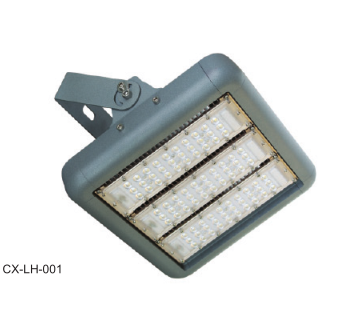
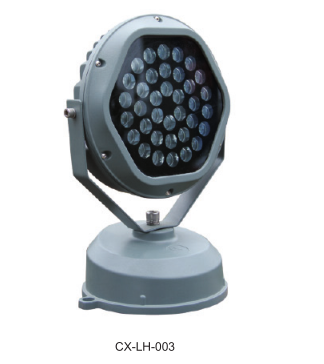
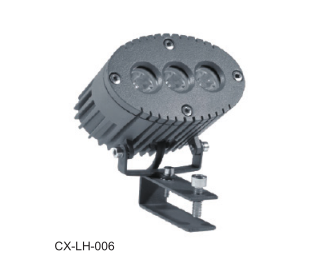


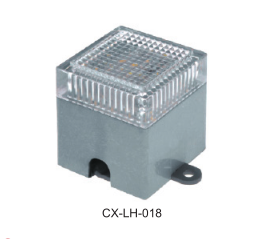
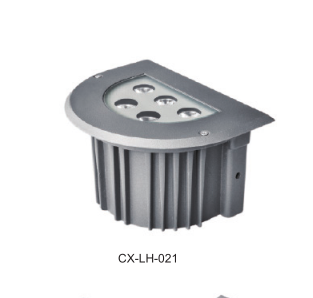
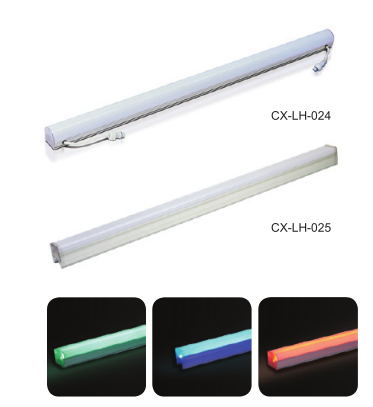
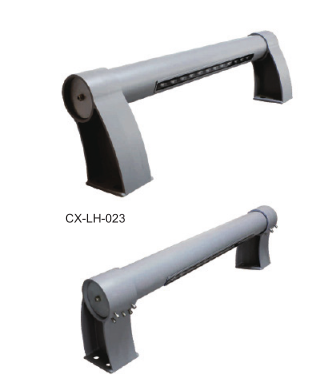
Building Lighting Series,Building Lighting,Building Lighting Control Systems,Building Lighting Design
Jiangsu chengxu Electric Group Co., Ltd , https://www.chengxulighting.com